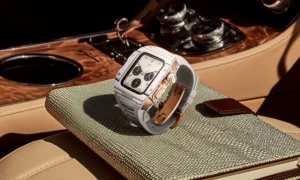Tesla's 2022 AI Day has officially kicked off, where CEO Elon Musk unveiled a new humanoid robot, as well as the latest progress on the supercomputer Dojo and Full Self-Driving (FSD) technology. Last year, Tesla introduced a humanoid robot that stands 1.72 meters tall and weighs 56.6 kilograms, which is set to utilize the training mechanisms of the Dojo supercomputer to improve its functions. The robot, named “Optimus,” has made significant progress and was able to walk onto the stage unassisted, without wires or external packaging. Although its walking posture is comparable to Xiaomi's “CyberOne” and far from Boston Dynamics' robots, its upper body movements are more precise.
Optimus is equipped with a 2.3 kWh cylindrical battery pack, weighs 73 kg, and has a power consumption of 100W when sitting still and 500W when walking slowly. The robot has over 200 degrees of freedom in its body, with its bionic fingers being highly flexible, possessing 27 degrees of freedom, and capable of natural walking. Tesla has integrated many self-developed permanent magnet motors into the robot, and harmonic reducers are used in the knees to support normal walking and shock absorption. The joint structure can even support the weight of a piano.
From the demonstration video, it is evident that the Optimus robot can perform actions such as squatting, picking up boxes, grasping objects, and even watering plants. Last year, Tesla stated that the robot would use the same artificial intelligence technology as their vehicles. The robot has a complete visual system, similar to the FSD technology in Tesla cars, which allows it to accurately recognize everyday tasks. It uses cameras to capture real-world data and neural networks for computation.
In addition to FSD, Tesla has also simulated robot fall scenarios based on vehicle crash tests to protect the robot's central computing platform. It is believed that robot collision test standards will follow in the near future. The robot is expected to become more proficient in recording routes and even charging itself in the future. Musk stated that intelligent robots are getting closer to us, and perhaps in the next three to five years, people will be able to purchase their robots for less than $20,000.
However, the final product was brought onto the stage with the help of three strong men, indicating that humanoid robots still have a long way to go. Tesla's goal is to integrate automotive hardware and software deeply, and they are indeed making significant progress in this regard. The robot's primary visual component is based on the FSD algorithm. Over the past year, the public beta testing scale of FSD Beta has expanded from an initial 2,000 vehicles to 160,000, with a model trained every 8 minutes.
Tesla's automatic annotation system has also become more efficient, with the process of collecting environmental information, reconstructing 3D models for training, automatically annotating the system on the model, and manually correcting special markings in the Tesla data annotation system now running smoothly, with a significant increase in efficiency compared to before. To handle such a large amount of data, Tesla has created a CPU cluster and plans to build the first DojoExaPod in 2023, a supercomputer cluster built with D1 chips, which could further increase computing speed.
Of course, Tesla will continue to rely on a pure vision solution without relying on high-precision maps and lidar, and will continue to train models through deep neural networks. During the launch, Tesla provided an example of an unguarded left turn in autonomous driving, where the vehicle can not only recognize vehicles and pedestrians but also recognize pet dogs. Based on recognition, the vehicle will automatically choose the optimal route to pass through, avoiding some accidents.
Although Musk said that FSD Beta will be rolled out globally by the end of the year, the problem is that the perception training process still requires a large amount of road data collection, which is inevitably subject to the restrictions of different countries' laws and regulations. It is estimated that it will take a long time to use it in mass-produced vehicles.
In the Q&A session, many people raised their own questions about the robot, such as whether Tesla robots will become “Terminators” and attack humans. Musk stated that if that day comes, the government should strengthen the supervision and application of AI technology to prevent this advanced technology from being misused by criminals. It must be said that people's imagination is still very rich.
Musk also stated at the venue: “Through AI Day, we hope that the outside world's perception of Tesla can go beyond electric vehicles; we are pioneers in the field of real-world AI.” In summary, today's AI Day is more like a technology show for Tesla. In the future, the development of global high-tech will become faster and faster, and life will become better and better.






